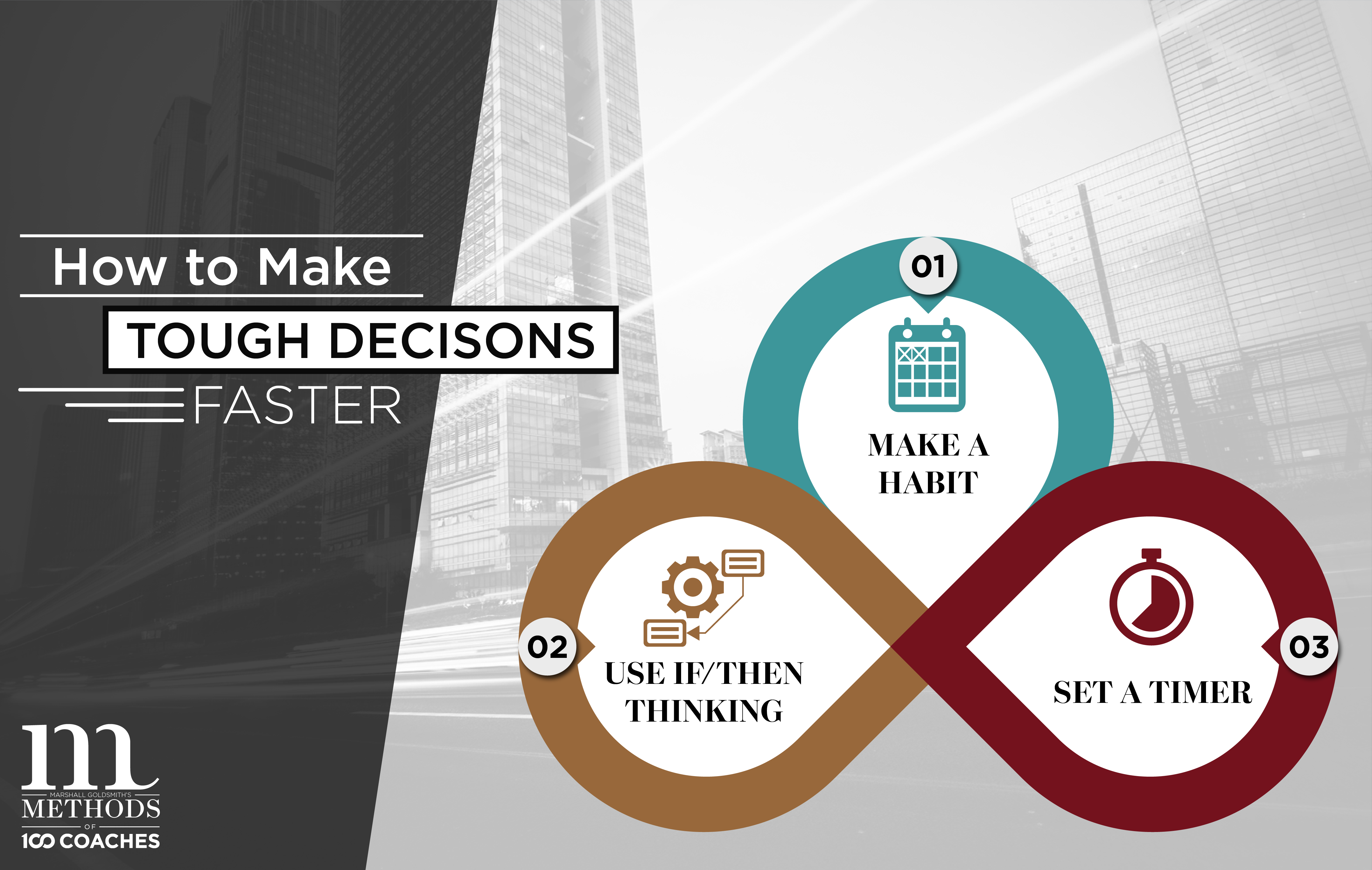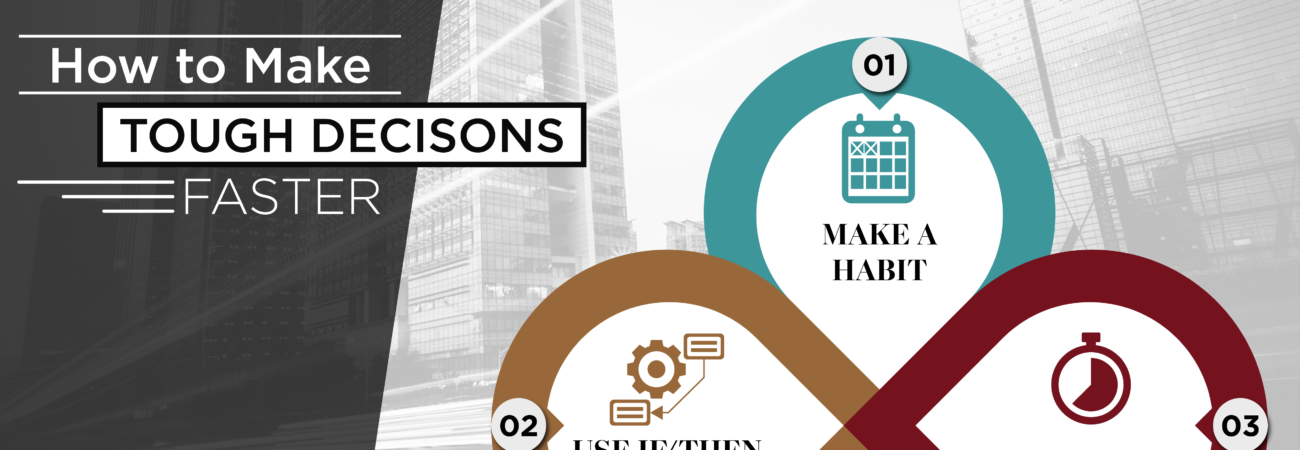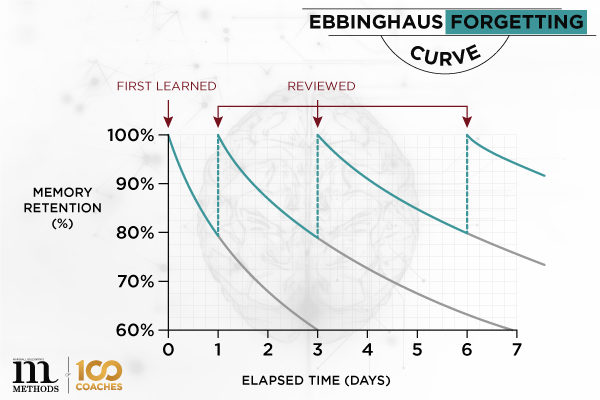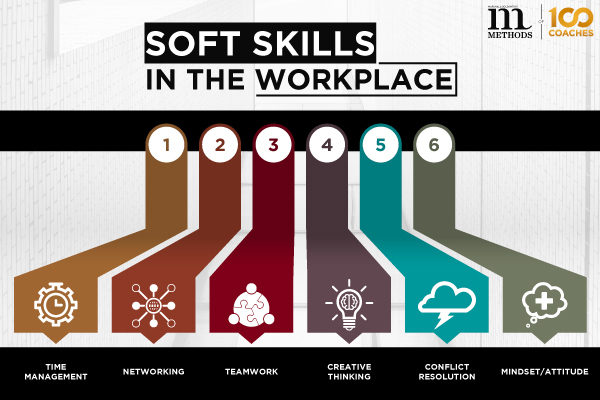As a manager, leader, small business owner, or executive coach, your life is likely filled with decisions. Day in and day out you’re making them, and they range in size and importance from life-altering to ultimately incidental. Really, this is no different from humanity at large — we all make an incalculable number of decisions each day: what to eat for breakfast, what to wear, how to style our hair, how we’ll greet our spouse, whether or not we’ll work out first thing in the morning, and so on and so on ad infinitum — and that’s just the first hour of the day! We do it so often that most of the time, it’s automatic, and we don’t even realize we’re doing it.

The trouble is, all of this decision-making and choosing tend to wear us down, and we begin to experience what Methods of 100 Coaches coach Peter Bregman calls “decision fatigue,” which causes our ability to make good decisions drop precipitously. Think about it like a tank of gas you have inside of yourself to keep making decisions. The more decisions you make on a given day, the more this reserve gets depleted, and the less efficiently and accurately you “run.”
For example, if you’ve had an incredibly stressful day of making top-line decisions for your company that affect the next three quarters in a serious way, how much discipline do you think you’ll have when 10 pm rolls around and you’re staring down the barrel of that chocolate eclair leftover in your fridge from the French bakery? If you’re anything like most people, your resistance to making that “bad” decision (eating sweets late at night) will be significantly lower than if you’d had a normal day and didn’t have to make extremely crucial decisions for the fate of your company.
While this fatigue is inevitable, and no one in the world has an unlimited supply of “gas”, there are things you can do to reduce this fatigue and make making decisions easier for yourself.
1. Make a Habit
Let’s examine this first tactic for making tough decisions through the example of getting in shape. Let’s say your goal is to lose some weight and get your blood pressure down to a level that won’t alarm your primary care physician. You’ve already started eating healthier — getting rid of junk food in your house, packing a lunch to bring with you to the office so you avoid that all-too-tempting burger joint just down the road, and so on. You realize, however, that you also need to start exercising more. You decide that taking a 30-minute walk every day — which you hope will eventually evolve into a jog — will be a good starting place.
Rather than deciding each day when a good time to take a walk is (or if there is one) you simply MAKE IT A HABIT by telling yourself that each day, right when you get home from work, you’ll take a walk around the neighborhood. By committing to this action and creating a regimented activity schedule (AKA, a habit) you’ve removed the barrier of choice from the equation and thus made it easier for you to do it. And by removing one more decision, you reduce your overall decision fatigue. Walking is simply part of your routine, not some add-on activity you dread doing each time, and find ways to skip out on doing it.
In this same way, you can make it a habit any time you have a tough decision if this is applicable. Now, a lot of times tough decisions are ones that are unforeseen and unplanned, sometimes even involving a spur-of-the-moment crisis, and in those cases, habits may not work as well, but the other two tactics below will.
2. Use If/Then Thinking
If/then thinking refers to the idea that you create boundaries around when and where decisions will be made. For instance, if you’re a manager and you have a troublesome employee who’s notorious for making everyone’s lives harder and sowing the seeds of conflict on a regular basis, you’re faced with the choice to keep them on the team or let them go. They haven’t done anything that constitutes a breach of their employment contract nor a serious infraction (such as getting clients to fire you, or harassing a fellow employee), but their general attitude needs an adjustment.
You decide to give them a stern talking-to about how they need to improve, and why their current behavior is demoralizing and demotivating to the team. They agree to change their ways and you both move on with your day. Knowing, however, that this “problem” employee isn’t likely to do a complete 180 in their behavior, and may need somewhat of a grace period to really change their ways, you decide that you’ll give this person three strikes before they’re “out.” You use if / then thinking in saying: “If this person has three more infractions, then I will let them go.”
As a manager, this is never an easy decision to let someone go, especially when they may be dealing with their own personal issues at home that are causing this aberrant behavior at work, but creating boundaries around when and why you’ll make those decisions can go a long way to making it easier for you.
When applicable, this model of decision-making can again reduce the number of decisions you need to make and thus reduce your decision fatigue. There are times, though, as aforementioned, when this won’t always work. Sometimes there is a decision staring you right in the face and one that needs to be decided upon urgently. In these cases, the third and final tactic is most helpful.
3. Set a Timer
Throughout life, and especially in a professional career where you may be in charge of a team or a company, there will be no shortage of difficult — even impossible-seeming — choices to be made. Crises occur when we least expect them (in fact, that’s what makes them “crises”) and we’ll have no choice but to take action in the form of a decision. Sometimes that decision may be to take no action, but, as we’ve heard in the words of the great Canadian rock band RUSH — “if you choose not to decide, you still have made a choice.” Tough decisions like this number in difference and variety; sometimes you’ll have to fire someone, sometimes you’ll have to can a project, and sometimes you’ll have to tell everyone at the company that you’re going bankrupt. In these cases, the decisions aren’t simply going to vanish, and can’t be wished away — so what do you do? The best option here is to simply set a timer. Give yourself a time limit in which to make the decision. This helps reduce the anxiety around a lingering decision that needs to be made and forces you into set parameters. It’s similar to “if/then” thinking in the way that you could: “If I don’t make a choice before the timer goes off, then when it dings I will make a decision then,” but it’s a little more specified, especially to time-sensitive calls that need to be made.
This one may seem like the simplest, most bone-headed tactic of the three, but in many ways, it can be the most effective. Most decisions don’t require days and days of deliberation; you tend to know in your “gut” what the right move is rather quickly. Setting a timer and sticking to it will help you not overthink things and get to the crucial answers more quickly.
Another note: this particular tactic helps most when there aren’t clear-cut “right” or “wrong” answers. Save this one for the toughest, most ambiguous decisions that you’re likely to overanalyze.
Life will never be free of decisions. It’s a part of living with what we call “free will,” and in some ways what makes us human beings. The thing to remember is that decisions may never get easier, but you can do things to help make those decisions easier and require less thought.
Want to learn more about tough decision-making and how to jumpstart your productivity?
Get access to Peter Bregman’s FULL course on Leading With Emotional Courage and see the immense difference this information can make in your professional career and personal life.





